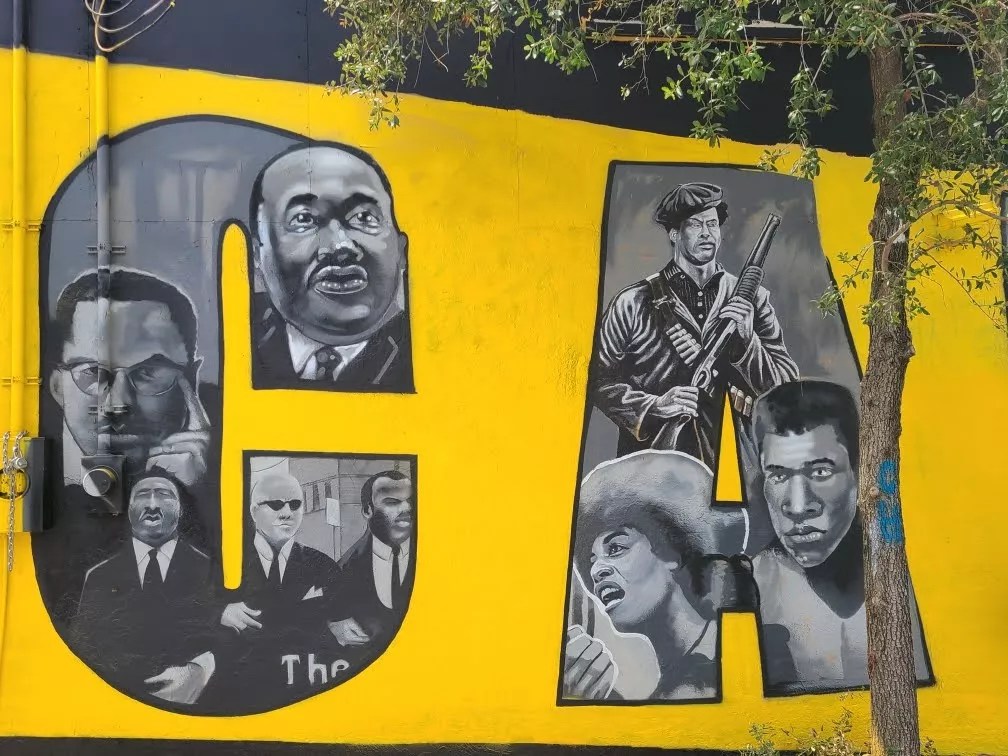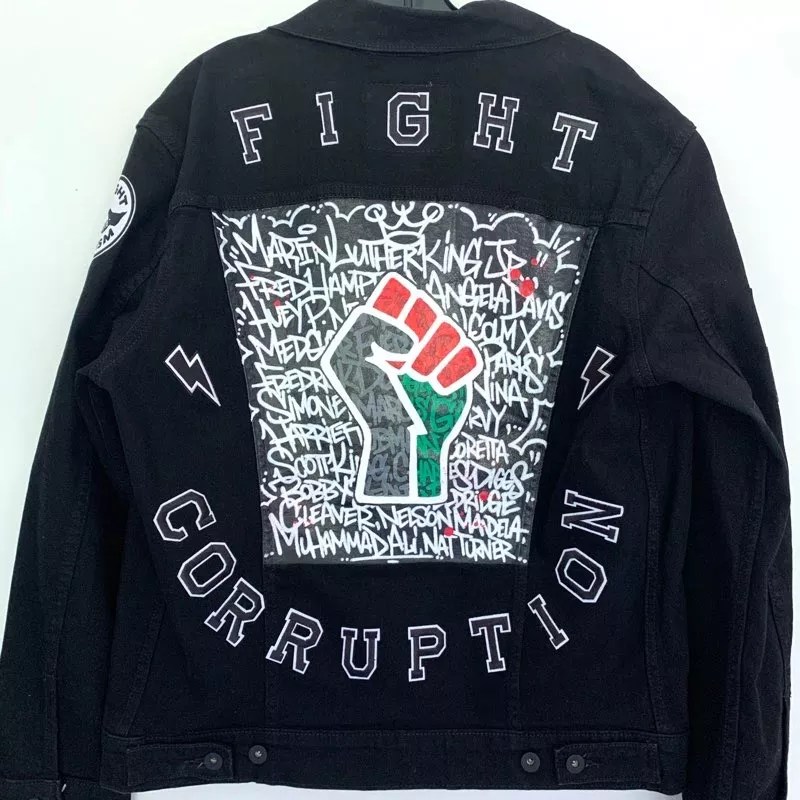
Photo by Kyle Holbrook

Audio By Carbonatix
On 25th Street and Third Avenue in Wynwood, a new mural depicts the faces of the ongoing struggle for Black Americans within the frame of block letters that read “AMERICAN HISTORY.”
Kyle Holbrook is a local artist and founder of Moving the Lives of Kids Community Mural Project, a nonprofit that focuses on the arts, youth development, and education. He recently completed another mural in Overtown to honor Colin Kaepernick, Breonna Taylor, and George Floyd at the beginning of June.
“After the last mural, I realized a lot of these messages needed to be seen in the area that has the most eyes on it, which is in Wynwood,” Holbrook says.
The new mural was funded by Louis Wolfson, whom the artist describes as the “godfather of murals.” Wolfson, one of the three founders of Pinnacle Housing, is a real estate developer who has worked with Holbrook in the past to beautify affordable housing communities.
“It is essential to understand, in this day and age, Americans are not created equal as our Constitution mandates,” Wolfson tells New Times. “We are hopeful this American-history mural helps to spark a trend and energize this community to continue to speak out through this medium around the planet.”
Holbrook then reached out to the co-founders of the Museum of Graffiti, Allison Freidin and Alan Ket, to help promote the mural. The co-founders had already planned to launch a show inside the museum called “The Fabric of America: Artists in Protest,” which features original work from over 30 local artists and an international photographer who were invited to “speak their truth and raise their voices.”
“We’re always looking to get behind and further progressive causes and other movements that adhere to our vision and passion,” Freidin says.
The Museum of Graffiti exhibit features interviews with the artists, which can be listened to by scanning one of the various QR codes imprinted on the walls – an attempt to deliver a post-COVID art experience without guided assistance.
South Floridian graffiti artists and illustrators created protest-themed art painted onto denim jackets to mimic the appearance of protest signs commonly seen at marches. The wearable pieces are meant to portray a call for action at all times, not just at protests.

A Levi’s denim jacket reimagined as a wearable protest piece by artist View2.
Photo by Armando Colls
Another installation delivers an audio and visual experience that counts down the amount of time Minneapolis police Officer Derek Chauvin had his knee on George Floyd’s neck.
Photographer Pablo Allison has been documenting the migrant trail from Central America to the U.S. to capture images of protest graffiti on trains used by migrants to escape. The addition of his photographs to the exhibition provides an international perspective different from the stories told by local street artists.
The pieces will be alongside a historical timeline of protest movements to show visitors that the Black Lives Matter movement is a continuation of other important uprisings.
“For us, it’s very important to promote these projects. We exist because other institutions have neglected this art form and have not shown respect to the artists,” Ket says. “Our mission is to give a platform to an art form and to artists that are underrepresented.”
Holbrook was able to collaborate with a roster of local street artists, including E-Tone, Cyst, Cale, Black Brain, PHD, and Tierra Armstrong. Through their research, the collective chose the most notable figures and events in the Black-rights movement to tell a story of strength, struggle, peace, and revolution. Armstrong notes that during the production of the mural, she felt inclined to take the lead in painting the female figures.
“I wanted to make sure that the women were depicted in the strongest way possible because I think at the time being a civil rights activist and a Black woman, when you were made to believe your voice shouldn’t be heard, taking a stance was really powerful,” Armstrong says.
Each letter on the “AMERICAN HISTORY” mural has its own QR code that viewers can scan to learn more about influential individuals and game-changing events, such as the McDuffie riots of 1980 and the Los Angeles riots of 1992.
“The main point is education,” Holbrook says. “People must be knowledgable about how in debt this struggle of racial oppression has been, and this is part of American history. I am happy to live in America, but there’s certainly a lot we need to learn from our past to make it better for our future.”